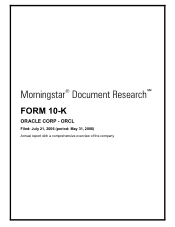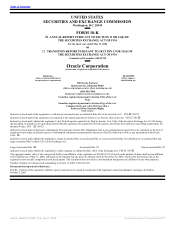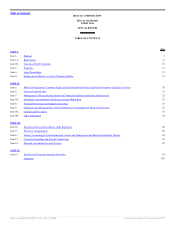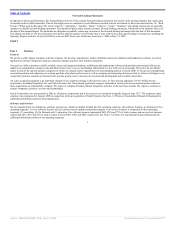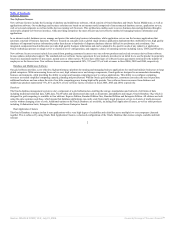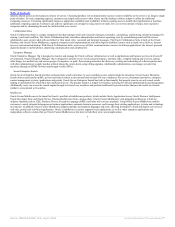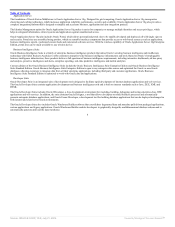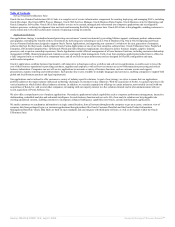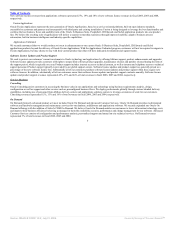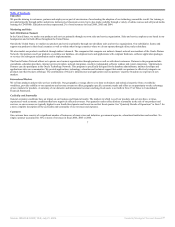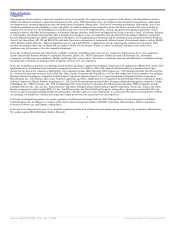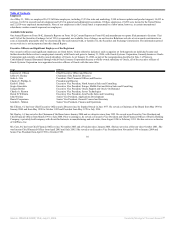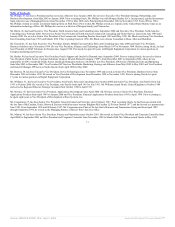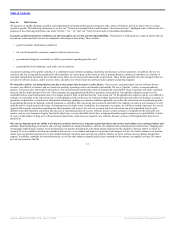Oracle 2005 Annual Report Download - page 5
Download and view the complete annual report
Please find page 5 of the 2005 Oracle annual report below. You can navigate through the pages in the report by either clicking on the pages listed below, or by using the keyword search tool below to find specific information within the annual report.
Table of Contents
Software Business
New Software Licenses
New software licenses include the licensing of database and middleware software, which consists of Oracle Database and Oracle Fusion Middleware, as well as
applications software. Our technology and business solutions are based on an internet model comprised of interconnected database servers, application servers,
web servers and computers as well as mobile devices running web browsers. This architecture enables users to access business data and applications through a
universally adopted web browser interface, while providing enterprises the most efficient and cost effective method of managing business information and
applications.
In an internet model, database servers manage and protect the underlying business information, while application servers run the business applications that
automate a myriad of business functions. We have focused on concepts such as global single instance application deployment that establishes fewer, high quality
databases of important business information, rather than dozens or hundreds of disparate databases that are difficult to synchronize and coordinate. Our
integrated, component-based architecture provides high quality business information and can be adapted to the specific needs of any industry or application.
Oracle technology operates on single server or clustered server configurations, and supports a choice of operating systems including Linux, UNIX and Windows.
New software license revenues include fees earned from granting customers licenses to use our software products and exclude revenues derived from software
license updates and product support. The standard end user software license agreement for our products provides for an initial fee to use the product in perpetuity
based on a maximum number of processors, named users or other metrics. We also have other types of software license agreements restricted by the number of
employees or the license term. New software license revenues represented 34%, 35% and 35% of total revenues in fiscal 2006, 2005 and 2004, respectively.
Database and Middleware Software
Our grid software provides a cost-effective, high-performance platform for running and managing business applications for small and midsize businesses to large
global enterprises. With an increasing focus on low-cost, high volume server and storage components, Oracle grids are designed to accommodate demanding
business environments, while providing the ability to assign and reassign computing power to various applications. This ability to reconfigure computing
resources as needed simplifies computing capacity, planning and procurement. With an Oracle grid infrastructure, customers can reduce the need to purchase
additional hardware and can reduce the risk of too little computing power during high traffic periods. New software license revenues from database and
middleware products represented 73%, 81% and 82% of new software license revenues in fiscal 2006, 2005 and 2004, respectively.
Database
The Oracle database management system is a key component of a grid infrastructure enabling the storage, manipulation and retrieval of all forms of data
including traditional relational data, XML data, OLAP cubes and unstructured data such as documents, spreadsheets and images. Oracle Database 10g, which is
designed for grid computing, is available in four editions: Express Edition, Standard Edition One, Standard Edition and Enterprise Edition. All editions are built
using the same common code base, which means that database applications can easily scale from small, single processor servers to clusters of multi-processor
servers without changing a line of code. Additional options to the Oracle Database are available, including Real Application Clusters, as well as other products
including Collaboration Suite, Enterprise Manager and Secure Enterprise Search.
Real Application Clusters
The Oracle Database is unique in that it runs applications with a very high degree of scalability and reliability across multiple low cost computers clustered
together. This is achieved by using Oracle Real Application Clusters, a clustered configuration of the Oracle Database that creates a single, scalable and fault
tolerant
2
Source: ORACLE CORP, 10-K, July 21, 2006 Powered by Morningstar® Document Research℠

